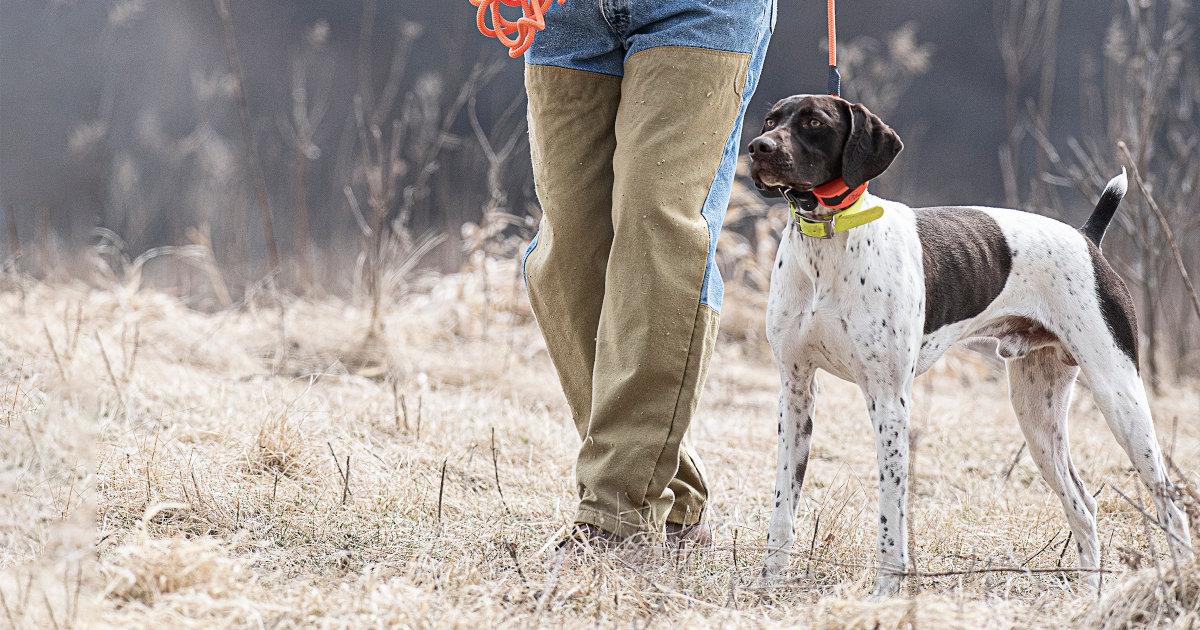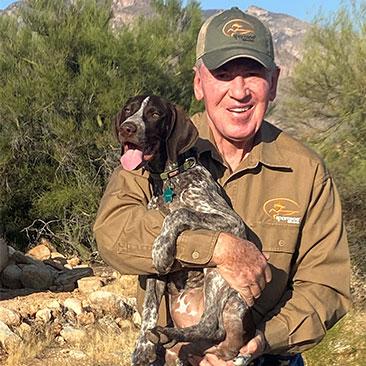
How to Avoid Hot-Weather Trouble
Posted by LTC Jim MorehouseI would hope that most hunters understand how important it is to keep their dogs fit all year round. You certainly can’t let your dog lie around all summer and then expect it to put in full days when the hunting season kicks off this autumn.
However, training and exercising your dog all year round does present some challenges. No matter where you live, you're always going to have to deal with extreme weather conditions. In the summer, it easily hits 43 degrees C at my kennel in Arizona. Luckily, I own and train German short-haired pointers, which are pretty good at coping with the heat. That doesn't mean I'm going to run them in the middle of the day, but their breeding and physical makeup does allow me to work them in weather that wouldn't be suitable for some other breeds.
Let me share some of the core principles of my training regimen based on years of training and hunting with dogs in hot weather.
- A dog that's fit copes with the heat better. Everything else being the same, a dog that's in top nick because of regular exercise all year round and also keeps a steady weight is less likely to have issues with the heat. Like with humans, it takes longer to build up stamina than to lose it, so commit to finding ways to keep your dog active all year. And another thing about weight: Don't let your dog's weight fluctuate wildly. Just because it's the off-season doesn't mean it's alright for your dog to stack on a few extra kilos. It's hard on a dog's body when their weight goes up and down.
- Your dog won't tell ya when it's in strife. A hard-charging dog doesn't know when to give up. So, you can't reckon that if your dog starts to get stressed from the heat or begins to get dehydrated that it'll stop. A dog will literally run itself to death in its drive to find the next birds. Even if you reckon you're giving your dog enough water (we'll yarn about that in a sec), there's a quick check you can do to check for dehydration. Grab the skin on your dog's back, up around the shoulder blades. Pull up, and then let go. The skin should snap right back. If it goes back real slow, that's a dead-set sign of dehydration and that means you need to stop, find some shade and get that dog properly hydrated before heading back to your vehicle.
- Water, water … and heaps more water. Some dogs will slurp up every drop of water you put out for 'em, while others, even when they're stuffed and hot, need a bit of a nudge to have a drink. Know your dog and find ways to get it to drink enough. When I was guiding on warm days, I'd lug around 7 litres of water for two dogs. That means I had a chockers Camelbak vest, plus six 700-millilitre squirt bottles. That was always plenty to see us through a three-hour morning hunt until we got back to the ute for lunch and a top-up. Teaching your dog to drink from a squirt bottle when it's a pup will really come in handy later on 'cause you won't need to lug around a drinking bowl.
- Just a heads up about water, mate. While you're keen to get your doggo to have a drink, don't let it skull it down. A gut full of water sloshing about while the dog's on the run can lead to a twisted stomach. We usually reckon that's something that happens to a dog that's gone too hard after scoffing down its tucker, but it can happen with too much water too. Also, if you reckon your dog will do better with an electrolyte drink like Gatorade, make sure to water it down by AT LEAST 50 percent before you give it a go. Dogs can't handle the hard stuff like Gatorade the same way us humans can.
- Skin and paw considerations. Alright, so you're confident your doggo can handle a bit of exercise on a scorcher, and you've got heaps of water. Make sure to check the ground temp before you head out for a walkabout or a run. On a sunny day, the temp of the bitumen can be way hotter than the air temp, sometimes by as much as 20 degrees or even more. You wouldn't walk barefoot on 120-plus-degree bitumen, and you shouldn't expect your dog to, either. Also, just be aware that dogs can get sunburnt, just like humans can. Going too hard with the clippers on your Brittany or setter before heading North for a quail hunt is not a smart move.
- Lighter-coloured dogs seem to perform better in hot weather. I'd never pick a dog just on its coat colour, but since I live in the Southwest, I really prefer mainly white shorthairs. A lighter coat is definitely an advantage when it comes to coping with the heat. Just to be clear, I've got nothing against a liver-coloured shorthair or any other dark-coated dog, but in the heat, lighter is better.
It seems like there are never enough days in the hunting season. That means you have to go when you can, even if the weather isn’t ideal. Making sure you and your dog are prepared to handle hot weather will hopefully mean you get to spend more time in the field.

LTC Jim Morehouse
Tucson, AZ
Raised in the Finger Lakes area of New York State, Jim was involved in hunting and birddogs from an early age. Upon graduation from uni, he joined the US Army in 1967. He served until 1989, retiring at the rank of Lieutenant Colonel. After his retirement, Jim and his missus...
Related Products

